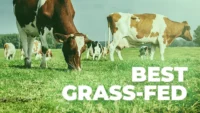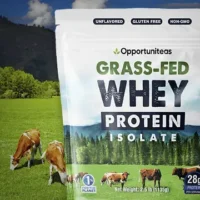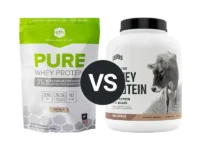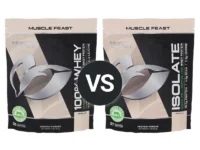Knowledge BaseYou're Questions Answered
What does "grass-fed" mean when it comes to protein powder?
When a protein powder is labeled as "grass-fed," it means that the animals that produced the milk used to make the protein powder were fed a diet primarily consisting of grass and other forage, rather than grains or other feed. Grass-fed diets are thought to be more natural and healthier for cows, and may lead to differences in the nutrient composition of the milk they produce.
There is some evidence to suggest that milk from grass-fed cows may contain higher levels of certain nutrients, such as omega-3 fatty acids, conjugated linoleic acid (CLA), and antioxidants, compared to milk from cows that are primarily fed grains or other feed (1,2). Some studies have also suggested that grass-fed milk may contain lower levels of certain hormones and antibiotics, although this is still a subject of debate and further research (3,4).
However, it is important to note that the impact of grass feeding on the nutrient composition of milk can vary based on a variety of factors, including the breed of the cow, the specific diet they are fed, and the environment in which they are raised (5). Additionally, the nutrient differences between grass-fed and grain-fed milk may not always be significant enough to make a substantial impact on human health (6).
When it comes to protein powders, grass-fed sources of protein, such as whey protein, may also contain higher levels of some nutrients compared to protein powders made from grain-fed sources. However, it is important to note that the nutrient differences between grass-fed and grain-fed protein powders may not always be significant enough to make a substantial impact on human health (7).
- Benbrook CM, et al. Organic Production Enhances Milk Nutritional Quality by Shifting Fatty Acid Composition: A United States–Wide, 18-Month Study. PLoS One. 2013;8(12):e82429.
- Daley CA, et al. A review of fatty acid profiles and antioxidant content in grass-fed and grain-fed beef. Nutr J. 2010;9:10.
- Srednicka-Tober D, et al. Composition differences between organic and conventional meat: a systematic literature review and meta-analysis. Br J Nutr. 2016;115(6):994-1011.
- Ruby CL, et al. Comparison of Growth Promoter and Antibiotic Residues in Conventional and Grass-Fed Beef. J Food Prot. 2019;82(9):1585-1591.
- Bauman DE, et al. Milk fat: origin of fatty acids and influence of nutritional factors thereon. In: Handbook of Milk Composition. Academic Press. 1995;345-368.
- Butler G, et al. Review: Fatty acid and fat-soluble antioxidant concentrations in milk from high- and low-input conventional and organic systems: seasonal variation. J Dairy Sci. 2011;94(2):461-471.
- Marshall K. Therapeutic Applications of Whey Protein. Altern Med Rev. 2004;9(2):136-156.
Related Questions
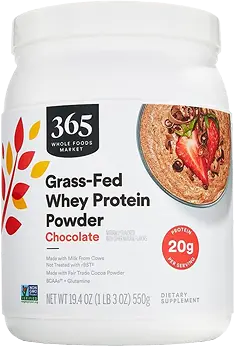
Your Answer
We are a participant in the Amazon Services LLC Associates Program, an affiliate advertising program designed to provide a means for us to earn fees by linking to Amazon.com and affiliated sites.
